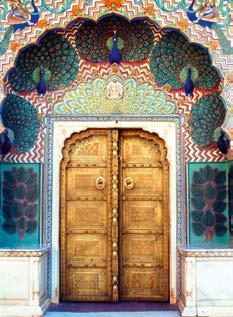
1 minute read
ndian Song I
from Lydia Courteille
Seeking ideas for her collections, Courteille travelled extensively in India, following in the footsteps of Jean-Baptiste Tavernier (1605–1589 ce), Tamerlane and his great-great-great grandson, Babur, who established the Mughal Empire, reigning between 1526–1530 ce
The result, ‘Indian Song’, is a collection full of colour, representing the extraordinary colours of India. Courteille takes us on a journey from temple to temple, where we visit the festivals that are of such importance to the Indian people.
Courteille took the architecture of the fabulous Madurai Gopuram complex to create her temple ring, set with colourful cabochon sapphires, rubies and spinel, which represent the stucco figures covering the temples’ facades. The carved emerald evokes the time of Mughal splendour, while the pink, sapphire Naga on the side represents the semi-divine figure who rules over the underworld. Nagas are often portrayed as cobra snakes, guardians of the Earth’s treasures, including gemstones, gold, rivers and lakes.

The emblem of India: a peacock story
The peacock has accompanied Courteille throughout her odysseys along the Silk Road. She first encountered this beautiful bird in Constantinople, then in the symbols of Zoroastrianism on her voyage of discovery to Samarkand and Khiva, and again in India where she saw the famous Peacock Gate of the City Palace in Jaipur.

Saraswati is the goddess of art and knowledge and the consort of Brahma. She is the patron of dialogue, the sciences, arts and music, and is believed to have invented Sanskrit. Courteille renders homage to this four-armed goddess by creating a jewel adorned with the symbols of purity and beauty, a swan and a peacock – two creatures that accompany Saraswati wherever she goes. Saraswati is often shown wearing a crown (karandamukuta) surrounded by a halo. She holds the sacred scriptures in one hand and a rosary (akshamala) in another, while playing a corded instrument, called a veena, with her other two hands. The four hands represent man’s four stages of apprenticeship. She is often surrounded by lotus flowers.






